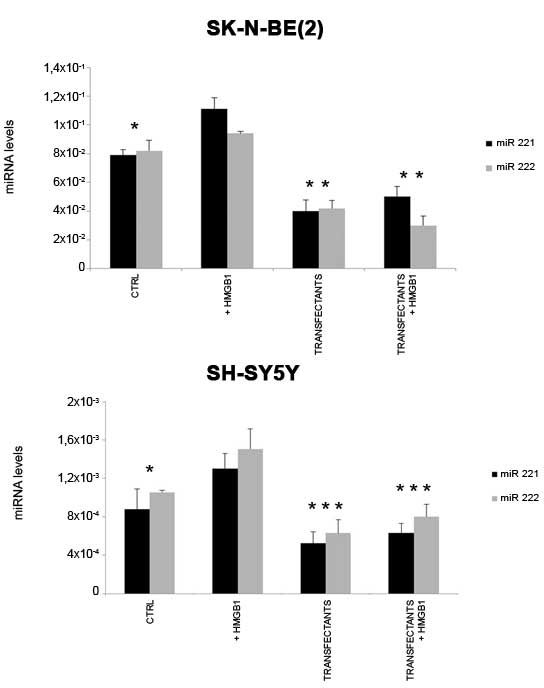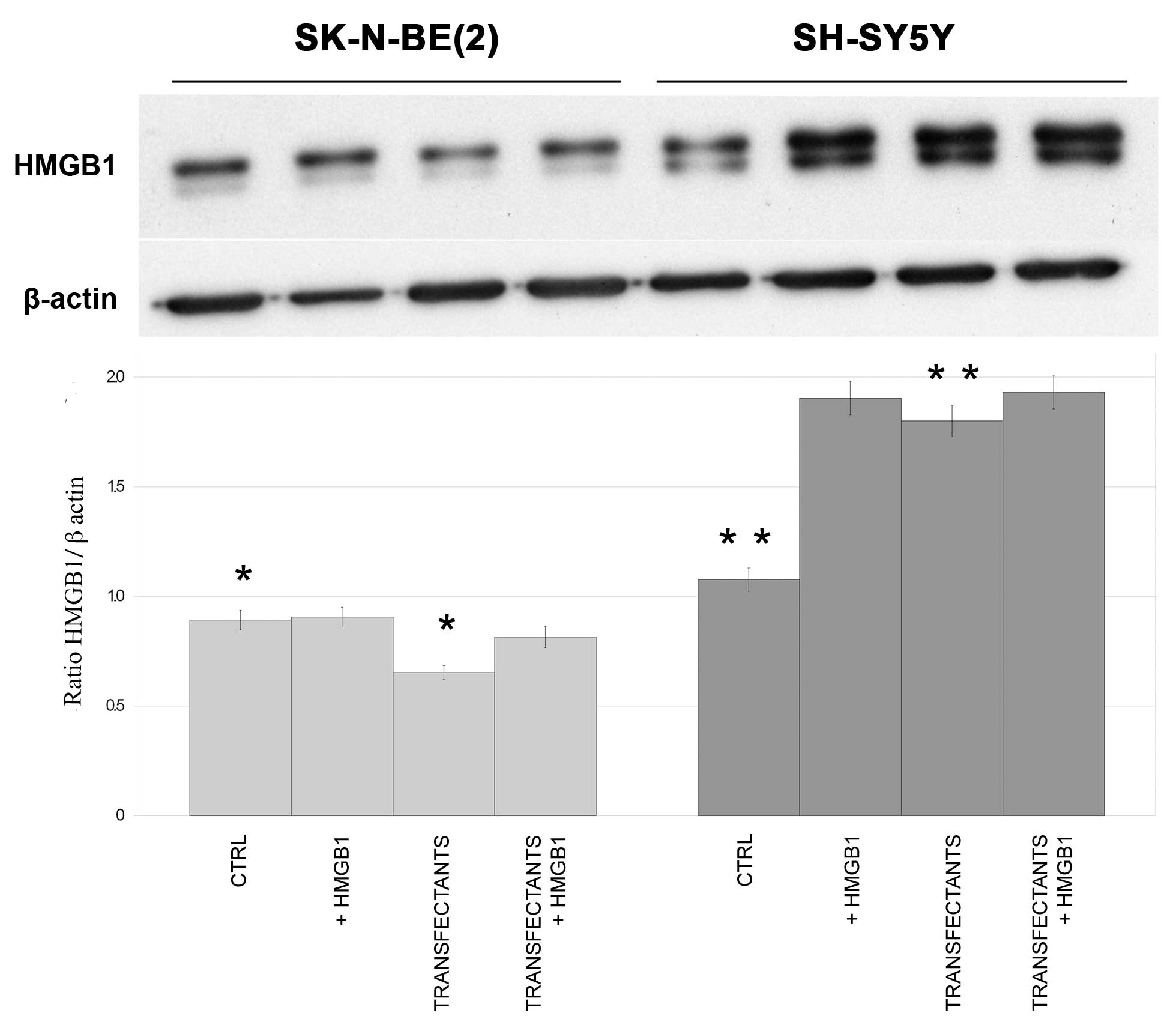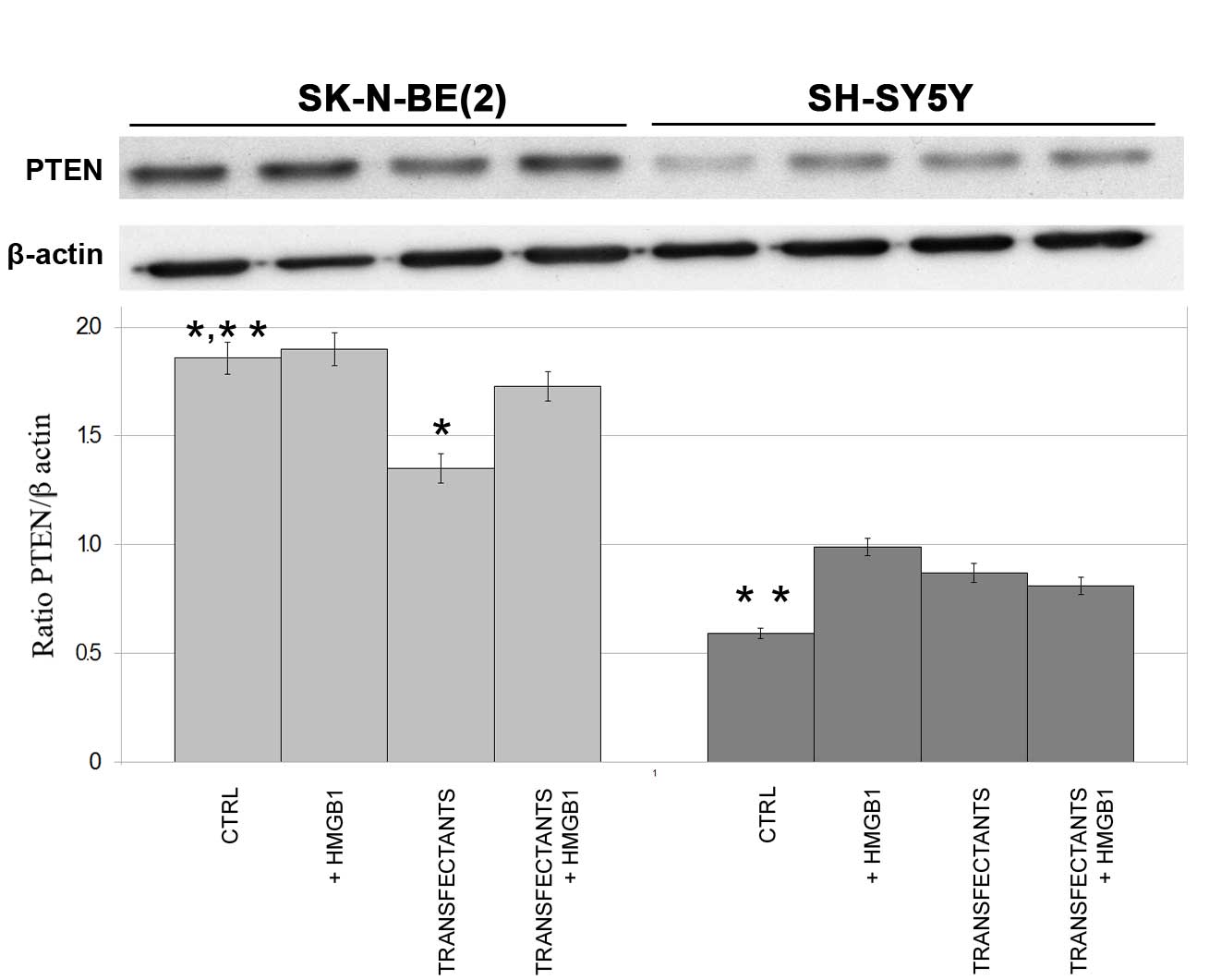|
1
|
Maris JM, Hogarty MD, Bagatell R and Cohn
SL: Neuroblastoma. Lancet. 369:2106–2120. 2007. View Article : Google Scholar : PubMed/NCBI
|
|
2
|
Thompson D, Vo KT, London WB, Fischer M,
Ambros PF, Nakagawara A, Brodeur GM, Matthay KK and DuBois SG:
Identification of patient subgroups with markedly disparate rates
of MYCN amplification in neuroblastoma: A report from the
International Neuroblastoma Risk Group project. Cancer.
122:935–945. 2016. View Article : Google Scholar : PubMed/NCBI
|
|
3
|
Pinto NR, Applebaum MA, Volchenboum SL,
Matthay KK, London WB, Ambros PF, Nakagawara A, Berthold F,
Schleiermacher G, Park JR, et al: Advances in risk classification
and treatment strategies for neuroblastoma. J Clin Oncol.
33:3008–3017. 2015. View Article : Google Scholar : PubMed/NCBI
|
|
4
|
Rubie H, De Bernardi B, Gerrard M, et al:
Excellent outcome with reduced treatment in infants with
nonmetastatic and unresectable neuroblastoma without MYCN
amplification: results of the prospective INES 99.1. J Clin Oncol.
(29): 449–455. 2011. View Article : Google Scholar : PubMed/NCBI
|
|
5
|
Wagner LM and Danks MK: New therapeutic
targets for the treatment of high-risk neuroblastoma. J Cell
Biochem. (107): 46–57. 2009. View Article : Google Scholar : PubMed/NCBI
|
|
6
|
Wang L, Che XJ, Wang N, Li J and Zhu MH:
Regulatory network analysis of microRNAs and genes in
neuroblastoma. Asian Pac J Cancer Prev. 15:7645–7652. 2014.
View Article : Google Scholar : PubMed/NCBI
|
|
7
|
Lin RJ, Lin YC, Chen J, Kuo HH, Chen YY,
Diccianni MB, London WB, Chang CH and Yu AL: MicroRNA signature and
expression of dicer and drosha can predict prognosis and delineate
risk groups in neuroblastoma. Cancer Res. 70:7841–7850. 2010.
View Article : Google Scholar : PubMed/NCBI
|
|
8
|
Cui C, Yu J, Huang S, Zhu H and Huang Z:
Transcriptional regulation of gene expression by micro RNAs
endogenous decoys of transcription factors. Cell Physiol Biochem.
33:1698–1714. 2010. View Article : Google Scholar
|
|
9
|
Mei H, Lin ZY and Tong QS: The roles of
microRNAs in neuroblastoma. World J Pediatr. 10:10–16. 2010.
View Article : Google Scholar
|
|
10
|
Samaraweera L, Grandinetti KB, Huang R,
Spengler BA and Ross RA: MicroRNAs define distinct human
neuroblastoma cell phenotypes and regulate their differentiation
and tumorigenicity. BMC Cancer. 14:3092014. View Article : Google Scholar : PubMed/NCBI
|
|
11
|
Schulte JH, Horn S, Otto T, Samans B,
Heukamp LC, Eilers UC, Krause M, Astrahantseff K, Klein-Hitpass L,
Buettner R, et al: MYCN regulates oncogenic MicroRNAs in
neuroblastoma. Int J Cancer. 122:699–704. 2008. View Article : Google Scholar : PubMed/NCBI
|
|
12
|
Thomas SK, Messam CA, Spengler BA, Biedler
JL and Ross RA: Nestin is a potential mediator of malignancy in
human neuroblastoma cells. J Biol Chem. 279:27994–27999. 2004.
View Article : Google Scholar : PubMed/NCBI
|
|
13
|
Rothermund K, Rogulski K, Fernandes E,
Whiting A, Sedivy J, Pu L and Prochownik EV: C-Myc-independent
restoration of multiple phenotypes by two C-Myc target genes with
overlapping functions. Cancer Res. 65:2097–2107. 2005. View Article : Google Scholar : PubMed/NCBI
|
|
14
|
Armstrong MB, Mody RJ, Ellis DC, Hill AB,
Erichsen DA and Wechsler DS: N-Myc differentially regulates
expression of MXI1 isoforms in neuroblastoma. Neoplasia.
15:1363–1370. 2013. View Article : Google Scholar : PubMed/NCBI
|
|
15
|
Liu Y and Song L: HMGB1-induced autophagy
in Schwann cells promotes neuroblastoma proliferation. Int J Clin
Exp Pathol. 8:504–510. 2015.PubMed/NCBI
|
|
16
|
Mardente S, Mari E, Massimi I, Fico F,
Faggioni A, Pulcinelli F, Antonaci A and Zicari A: HMGB1-induced
cross talk between PTEN and miRs 221/222 in thyroid cancer. Biomed
Res Int 2015:: 512027. 2015. View Article : Google Scholar
|
|
17
|
Ayers D, Mestdagh P, Van Maerken T and
Vandesompele J: Identification of miRNAs contributing to
neuroblastoma chemoresistance. Comput Struct Biotechnol J.
13:307–319. 2015. View Article : Google Scholar : PubMed/NCBI
|
|
18
|
Livak KJ and Schmittgen TD: Analysis of
relative gene expression data using real-time quantitative PCR and
the 2(−Delta Delta C(T)) Method. Methods. 25:402–408. 2001.
View Article : Google Scholar : PubMed/NCBI
|
|
19
|
Qiao L, Paul P, Lee S, Qiao J, Wang Y and
Chung DH: Differential regulation of cyclin-dependent kinase
inhibitors in neuroblastoma cells. Biochem Biophys Res Commun.
435:295–299. 2013. View Article : Google Scholar : PubMed/NCBI
|
|
20
|
Guglielmi L, Cinnella C, Nardella M,
Maresca G, Valentini A, Mercanti D, Felsani A and D'Agnano I: MYCN
gene expression is required for the onset of the differentiation
programme in neuroblastoma cells. Cell Death Dis. 5:e10812014.
View Article : Google Scholar : PubMed/NCBI
|
|
21
|
Li W, Guo F, Wang P, Hong S and Zhang C:
miR-221/222 confers radioresistance in glioblastoma cells through
activating Akt independent of PTEN status. Curr Mol Med.
14:185–195. 2014. View Article : Google Scholar : PubMed/NCBI
|
|
22
|
Mardente S, Mari E, Consorti F, Di Gioia
C, Negri R, Etna M, Zicari A and Antonaci A: HMGB1 induces the
overexpression of miR-222 and miR-221 and increases growth and
motility in papillary thyroid cancer cells. Oncol Rep.
28:2285–2289. 2012.PubMed/NCBI
|
|
23
|
Zhao Z, Ma X, Hsiao THM, Lin G, Kosti A,
Yu X, Suresh U, Chen Y, Tomlinson GE, Pertsemlidis A and Du L: A
high-content morphological screen identifies novel microRNAs that
regulate neuroblastoma cell differentiation. Oncotarget.
15:2499–2512. 2014. View Article : Google Scholar
|
|
24
|
Schmidt AM, Yan SD, Yan SF and Stern DM:
The biology of the receptor for advanced glycation end products and
its ligands. Biochim Biophys Acta. 1498:99–111. 2000. View Article : Google Scholar : PubMed/NCBI
|
|
25
|
Sajithlal G, Huttunen H, Rauvala H and
Munch G: Receptor for advanced glycation end products plays a more
important role in cellular survival than in neurite outgrowth
during retinoic acid-induced differentiation of neuroblastoma
cells. J Biol Chem. 277:6888–6897. 2002. View Article : Google Scholar : PubMed/NCBI
|
|
26
|
Chen J, Song M, Yu S, Gao P, Yu Y, Wang H
and Huang L: Advanced glycation endproducts alter functions and
promote apoptosis in endothelial progenitor cells through receptor
for advanced glycation endproducts mediate overpression of cell
oxidant stress. Mol Cell Biochem. 335:137–146. 2010. View Article : Google Scholar : PubMed/NCBI
|
|
27
|
Wang L, Li S and Jungalwala FB: Receptor
for advanced glycation end products (RAGE) mediates neuronal
differentiation and neurite outgrowth. J Neuroscience Res.
86:1254–1266. 2010. View Article : Google Scholar
|



















